GUEST BLOGGER MICHELLE CUSOLITO
Overview
One of my biggest challenges as a science communicator is making complex topics understandable to young people. My goal is to write in an engaging way and to simplify those topics, without simplifying them so much that my writing becomes inaccurate.
In this lesson, we’ll examine passages from two of my books and break down the decisions I made as an author. Then students will try writing a short STEM passage intended for elementary students.
Ideally, a science teacher and an English teacher would collaborate on this multi-day lesson.
Materials
- Copies of each book*:
- A Window into the Ocean Twilight Zone: Twenty-Four Days of Science at Sea
- Diving Deep: Using Machines to Explore the Ocean
*If your school or library doesn’t have multiple copies of the books, try reserving them through your local public library. You can usually do that easily on-line. If you don’t know how, ask a librarian! (I used to get 70+ books per month for my classroom.)
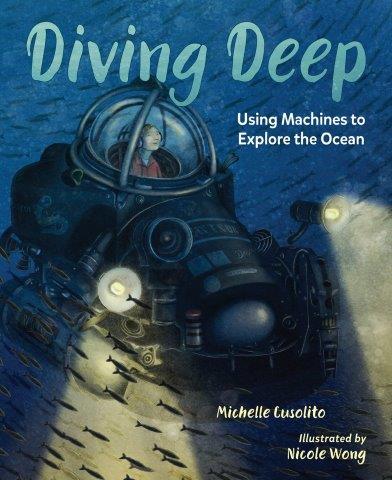

Background for teachers
Before I start writing, one of my first considerations is my audience. My first two books were picture books meant to be read aloud to children ages five to nine. My latest book targets middle schoolers and up. The way I approached the content in these books is very different.
I start by considering the knowledge my readers likely have before they open my book. My background as an educator is invaluable here. I know the basic topics and subjects taught in elementary school and how those topics become more complex as students age. In the early days of my research for A Window into the Ocean Twilight Zone: Twenty-Four Days of Science at Sea, I also sat down with a middle school science teacher to gain a deeper understanding of the science content taught in grades 7 and 8 and how that expands as students move into high school. Before I met with her, I believed the content I intended to write about would be useful to junior and senior high school students. Not only did our talk confirm this, she pointed out curriculum connections I hadn’t even considered.
Getting started
Day 1
- Break students into pairs or threes.
- Provide each group with a copy of the two books with the following passages flagged:
- A Window into the Ocean Twilight Zone p. 76-83
- Diving Deep, p. 18-19 (the Alvin pages) (If you have time, you could assign the whole book since it’s short. If not, these two pages can stand in for the whole text.
- Direct students to read the two passages. As they read, they should make notes about the way the complex content is presented in each book. What makes it accessible to the target audience age? Have students keep a separate list for each book.
- Come back together as a whole class and have groups share what they noticed*. Create a master list for each book. (Ideally on a chart paper that can be permanently displayed or a digital version that can be projected in subsequent days.)
- Compare the two lists. What differences are there between the picture book and the book for older readers? Are there any similarities?
- Whole group: Can they think of other strategies they could use that weren’t illustrated by these two selections? Add those to the lists.
- Extension/homework option: Visit the public library and read more nonfiction books written for younger readers, seeking other helpful strategies.
* A list of my choices comes at the end of this lesson. You can use it to fill out the lists students create.
Day 2+ (If doing the Extension/homework option above, leave time between day one and day two)
- Review the lists created during day 1.
- Pair students up again and have them work together to write a short piece about a complex science topic they’re currently studying or researching. The goal is to apply some of the strategies they noted to make their writing accessible to younger students. This could be a single day activity, or it could be expanded over several class periods.
Reminder for students:
- choose your target age range.
- Review the lists created yesterday to find approaches you want to try.
Extension idea
This whole lesson could be expanded into a project that includes the art teacher, English teacher, and science teacher. Possible tasks could include writing and illustrating a picture book. Then, students could visit the elementary school and read their books to younger kids.
This project is an excellent tool for assessment of student learning: they really need to understand the content to be able to write about it for younger students.
Tip for teachers
Picture This: How Pictures Work by Molly Bang teaches how artists create illustrations for picture books.
If students create picture books, I’d love to see them! If you email me at michelle (at)michellecusolito(dot)com, I’ll respond.
You could also tag me on social media if you share publicly.
Science communicator strategies used in Diving Deep
- Layered text. Adults could read the whole book to the youngest students by only reading the larger font text. (On pages 18-19 it appears on the left page). They could read all of the text to older readers.
- The larger text is lyrical. Poetic devices make the story fun to listen to when read aloud.
- The most complex content is in the sidebar (the box on the right page).
- The language in the sidebars is direct (not lyrical).
- The heading states the subject of the sidebar.
- Important details are stated in short bites below the heading (rather than putting it in full sentences).
- The main text in the sidebar uses short sentences.
- This isn’t visible to the reader, but I made MANY difficult choices about what to leave out. I could have said so much more about Alvin on these two pages. (I wrote a whole book about just Alvin).
Science communicator strategies used in A Window into the Ocean Twilight Zone
In addition to many of the strategies above (see if you can find them!), I also used:
- Photographs break up the text and keep visual learners engaged. Clear captions help clarify the text.
- Clear headings break up the chapters and include the date and time to keep readers oriented.
- Headings also include latitude and longitude to show a real world application.
- A double page diagram illustrates how the MINIONs work (special thanks to Natalie Renier and Woods Hole Oceanographic Institution for letting use the graphic) and provides another way to learn the content I describe in my text. (Side note: A video of this deployment is available below.) I also included a QR code in the back of the book that leads readers to videos that further support the text.
- I included things that I felt would be fun for young readers. For example, most scientists don’t spend a long time writing about how Life Savers are used in marine science, but I knew that would interest kids.
- I made connections to classroom learning on page 77 (use of Raspberry Pi and Arduino Nano).
- Quotations bring in different voices to keep the text engaging.
- Beautiful book design (by Diane Earley) makes the book visually appealing.
Featured image credit
“Mixed zooplankton sample” by Adriana Zingone, Domenico D’Alelio, Maria Grazia Mazzocchi, Marina Montresor, Diana Sarno, LTER-MC team, licensed under CC BY-SA 4.0.
Michelle Cusolito, M.Ed, is a former elementary school teacher and curriculum developer. She currently teaches Writing at Simmons University in the MFA program. Flying Deep: Climb Inside Deep-Sea Submersible Alvin, was awarded the PEN-NE Susan P. Bloom Children’s Book Discovery Award and was named a “Must Read” at the Massachusetts Book Awards. It was also on the Kirkus Best Books list and the NSTA Outstanding Science Trade Books list. Diving Deep: Using Machines to Explore the Ocean, was also a “Must Read.” A Window into the Ocean Twilight Zone: Twenty Four Days of Science at Sea is her debut middle grade book. Two books: In the World of Whales and Jellyfish Scientist: Maude Delap and Her Mesmerizing Medusa’s come out in 2025. Website, Instagram and Bluesky.
Author photo credit: © Woods Hole Oceanographic Institution, Marley Parker


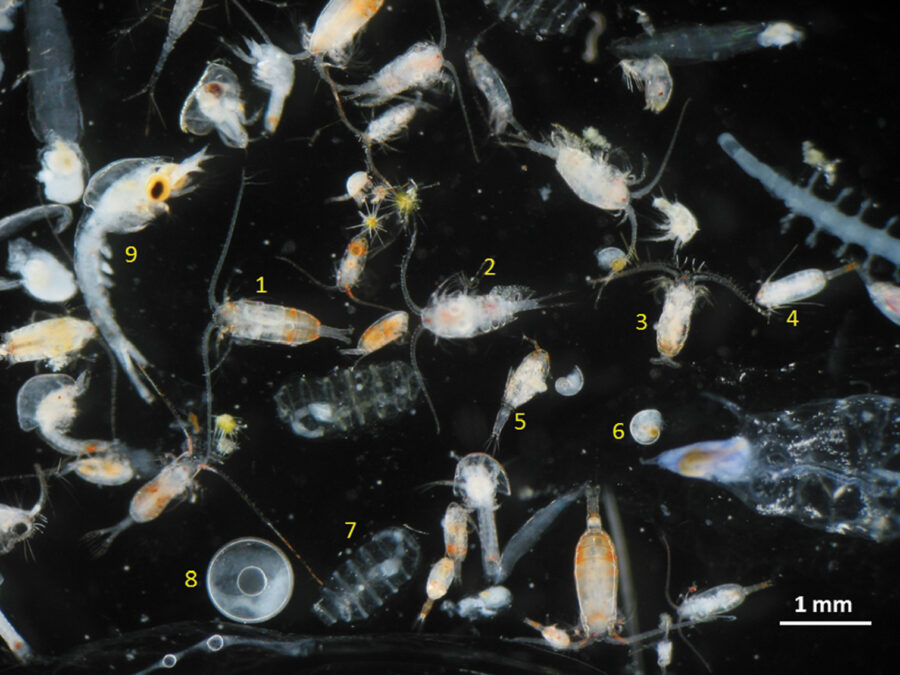

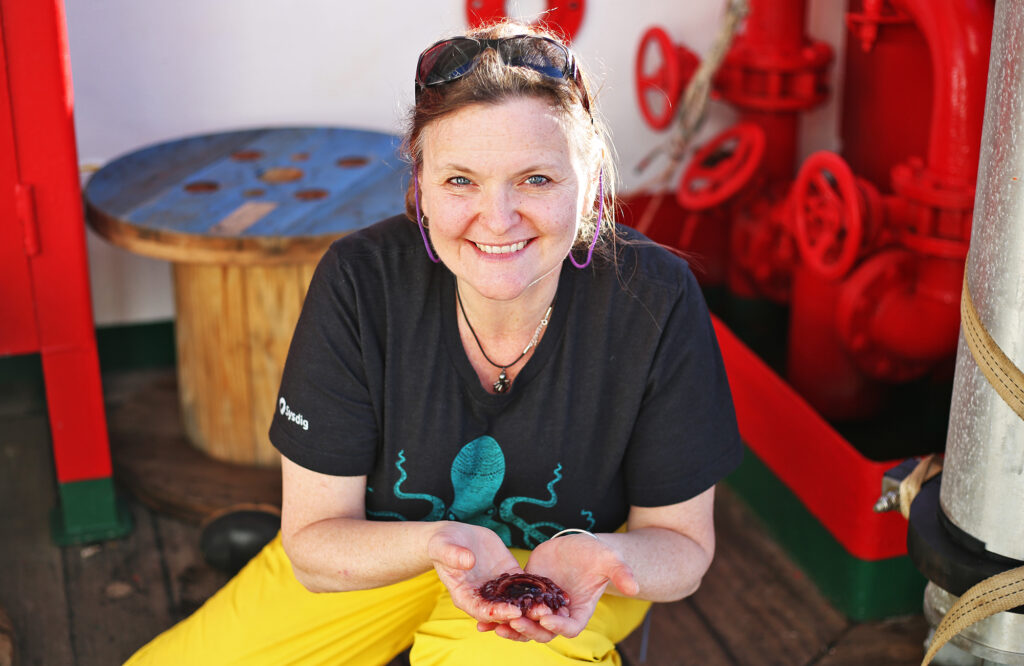
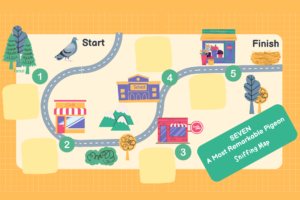
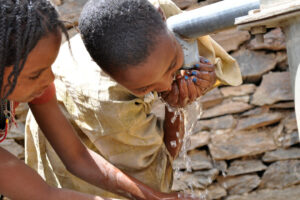
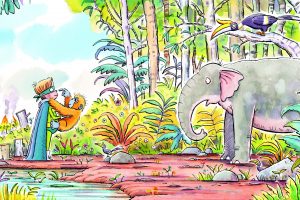


Leave a Reply
Your email is safe with me.